HTC One M8 Review - UltraPixel Camera Image Quality Review
UltraPixel Camera Image Quality
HTC's latest Android phone sets the bar for 2014
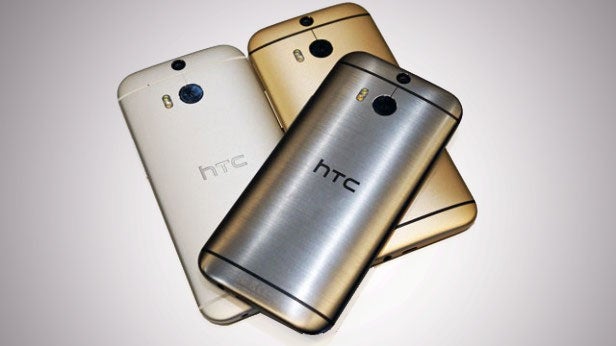
Sections
- Page 1 HTC One M8 Review
- Page 2 Screen and Video Review
- Page 3 Sense 6 and Android 4.4 Review
- Page 4 Performance and Gaming Review
- Page 5 Camera App Review
- Page 6 Duo Camera Review
- Page 7 UltraPixel Camera Image Quality Review
- Page 8 Battery Life, Call Quality and Verdict Review
HTC One M8 Camera: Image Quality and Performance
The HTC One M8 main image camera is very similar to that of last year’s HTC One. They share the same UltraPixel sensor, but the M8 uses the image processor hardware of the Snapdragon 801 – and at present the two have different software (although the HTC One is to get an upgrade to Sense 6 later this year).
The idea of the UltraPixel sensor is that while it’s lower-res than the competition, it uses larger sensor pixels for better low-light performance. Its sensor pixels are two microns across, where, for example, the Galaxy S5’s are 1.1 microns.
Shooting performance is great. Focusing is extremely fast, and shot-to-shot speeds are excellent. You can shoot multiple ‘normal’ photos in a second, without even using a burst mode. Things get a lot slower when you use the Night mode in very low light conditions, but otherwise it’s about as fast as an iPhone 5S. HTC claims 0.3-second focusing speeds, which is the same claim Samsung makes of the Galaxy S5 – and that phone has a phase detection focus layer, missing from the HTC One M8.
The only thing that really slows you down here is how awkward it can be to switch between shooting modes.
Moving to image quality. Here’s how the HTC One M8 compares to last year’s top phone in our classic detail test.
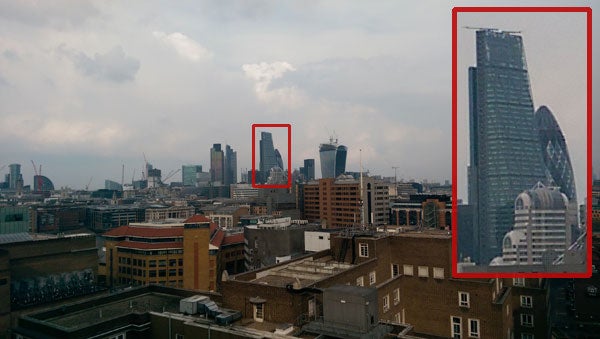
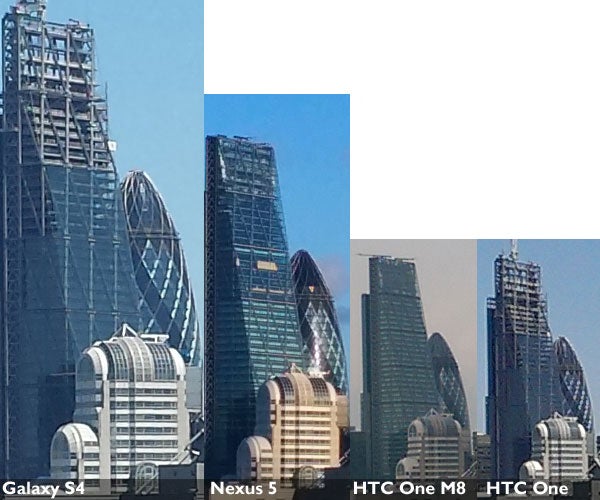
As you can see, the 4-megapixel sensor provides a similar level of detail to first HTC One. No surprise there. However, looking at the fine details, the new phone is clearly a bit better at rendering the finer bits.
The thin lines on the front building are more faithful, where they’re oddly expanded in parts on the old model. Part of this may be down to the significantly different lighting conditions, although the new image signal processor of the One M8 should – in theory – improve performance a bit.
Still, we see the same limited detail capture, and some of the old image problems are back. There are two serious ones. The first is exposure metering – the HTC One M8 is all over the place.
It will often hugely overexpose the sky – especially if it’s cloudy. The phone seems to take a far more direct approach to exposure judgement than most other phones. To explain – with an iPhone 5S, if you tap on an object the phone will focus on it and judge its metering based on the brightness of that particular area, relative to the rest of the scene. The HTC One M8 will focus on the object too easily enough, but appears to base its metering solely on that spot, rather than taking the rest of the image properly into account.
High light contrast areas are also absolutely riddled with purple fringing/chroma noise. We saw this a fair bit in the HTC One, but it seems to have gotten worse if anything. If the limited resolution alone wasn’t enough to put you off blowing these images up, this chromatic aberration should push you over the edge. Here are a couple of images to demonstrate:
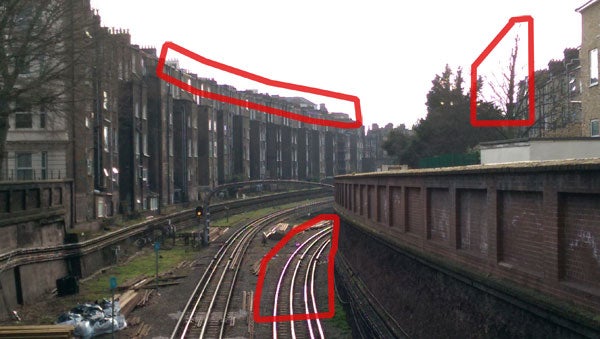
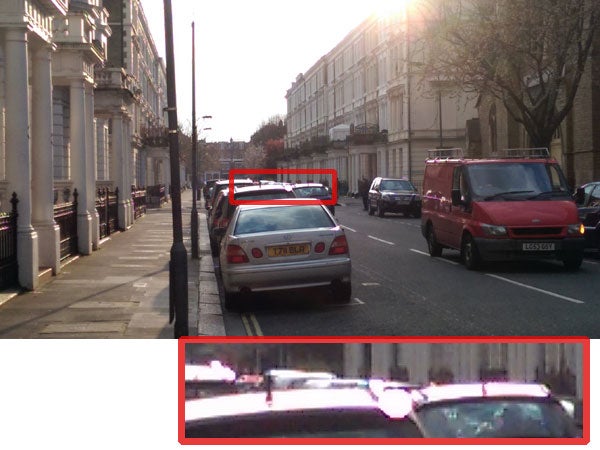
This purple fringing is the sort of thing we might expect to see towards the edge of a fairly poor ‘normal’ camera lens. But here it affects pictures throughout the shot.
Also note that the colours are rather de-saturated in these images, and that contrast is pretty poor. Reds in particularly suffer very badly. The result is pretty glum-looking images when there’s anything approaching a strong light source in, or just out of, shot.
HDR photography
One way to solve issues with light sources is to use HDR, which combines multiple shots with different exposure levels. As already noted in the camera app section, the HTC One M8 rather sidelines its HDR mode, and it doesn’t seem to be something HTC has put a lot of work into.
It’s decent, but not as effective as the super-smart HDR modes seen in the latest Samsung phones and the Nexus 5.
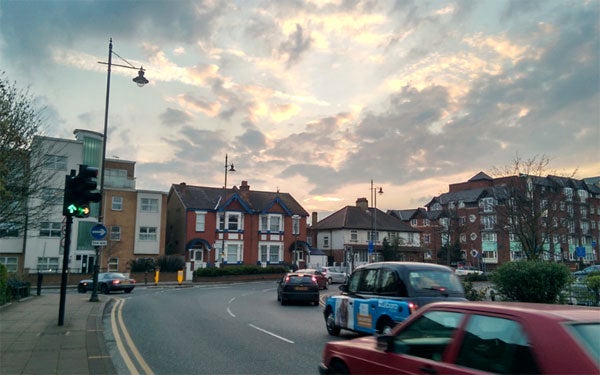
Low-light photography
It’s not often you see a camera that has more issues shooting in daylight than dusk/night, but that’s roughly what the HTC One M8 camera is. At night, colour saturation is better – relative to what we expect from a mobile phone. There’s some further loss of detail, but it’s much less than you’d experience from a higher-resolution, smaller pixel pitch phone.
This approach to the camera also helps indoors photography. The HTC One M8’s shots will be a little less noisy than some of the higher-resolution competition. However, phones like the Sony Xperia Z2 sidestep the sensor pixel size issue by offering a super-processed mode that wipes out virtually all noise from its super-low-light shots.

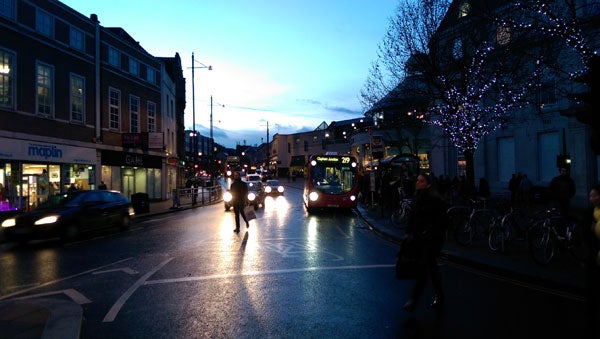
Are UltraPixels any good?
Here’s where we hit a tricky issue. The HTC One M8 camera can produce good shots. But it never really rides that high in the way HTC sells it as doing. In daylight, you’ll get more reliable, ready-to-go results with an iPhone. And in good lighting, we expect the Galaxy S5 to wipe the floor with the HTC One M8 in terms of detail capture.
Our issue is that while the premise of UltraPixels is sound – larger sensor pixels are better – the way HTC sells them is well off the mark.
Here’s how HTC sees things, comparing sensor pixel sizes: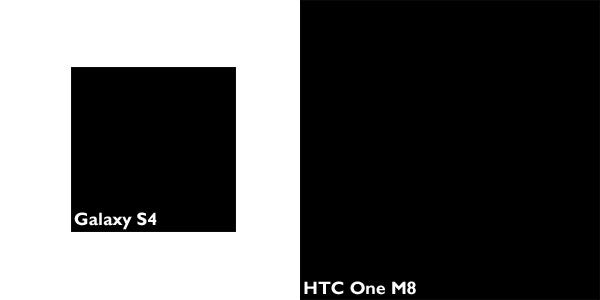
This is closer to the truth:
We should clarify that the largest block here is of an ‘out of date’ camera that is often derided in photo circles for having a sensor too small to provide pictures that can compete in its class. If we included your average DSLR, the HTC One M8 sensor pixel graphic would look tiny.
This isn’t an ‘emperor has no clothes’ case. But those robes aren’t quite as resplendent as the brochure may suggest, folks.
Macro
Some of the most satisfying pictures we took with the HTC One M8 were macro ones. The good f/2.0 lens is capable of focusing at about 10cm distance, which is about standard for a good mobile phone.
Other than being able to render a good amount of close-up detail, it was the manual focusing mode that came to the fore here. Like so many mobiles, the HTC One M8’s autofocus system will often fail to lock onto small, close-up targets – even in macro mode. The manual focus mode guarantees a nice, close focus. And the phone’s screen is easily sharp and bright enough to let you identify focus by eye (focus peaking would be nice, but we’re yet to see that in a mobile).
Macro-style demo #1: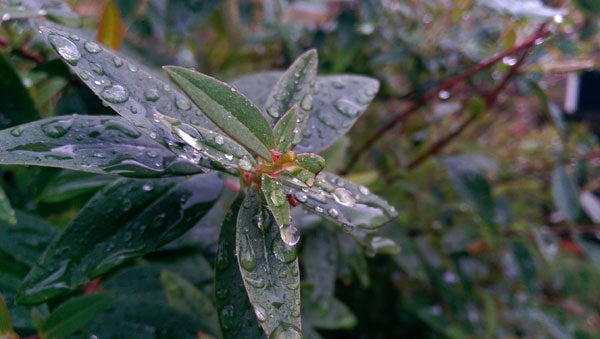
A 1:1 pixel crop from the above photo: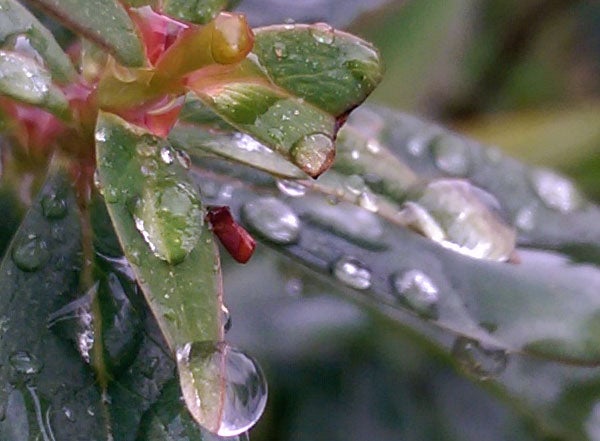
Macro-style demo #2
A 1:1 pixel crop from the above photo: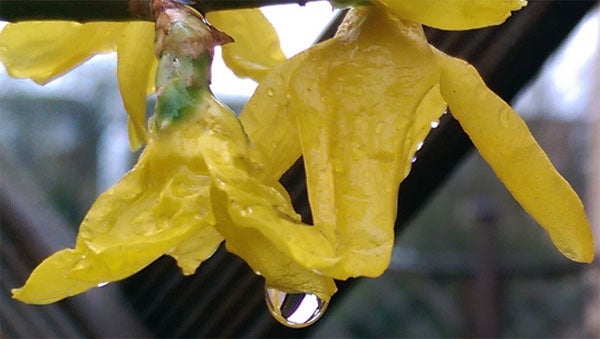
Filters and Post-Editing
We’ve already looked at the Foregrounder and Ufocus post-shooting effects, but there’a a lot more on offer too. The filters section offers a bunch of Insagram-style presets, and you can also make your own. It’s pretty comprehensive too, with the following customisable settings:
- White balance
- Levels
- Contrast
- Exposure
- Brightness
- Saturation
- Sharpness
- Grain
- Vignette
When the issues with many of the phone’s daylight photos can be fixed with a few seconds’ fiddle with these knobs, it seems a shame that the phone’s own image processing engine isn’t able to do the job itself. You can save your own filter presets – which comes in handy when fixing the common, basic contrast and saturation issues – but it’s hardly ideal.
Here’s a demo of what you can do when adding UFocus and filters to a basic portrait:
Step 1: raw image
Step 2: UFocus applied
Step 3: Filters applied
Front-facing camera
In an unusual twist, the front camera of the HTC One M8 is higher-resolution than its rear one. It has a 5-megapixel sensor. Of course, it’s of the ‘normal’ type, without the UltraPixel style of the main sensor.
Selfies and such are much higher-quality than the 1-2-megapixel shots you get from other front cameras. There’s more noise than the rear camera shots, but they’re still great. It’s selfie-tastic etc.
Here are a few more main camera shots for good measure. Scroll down for the link to the next page, where we deal with battery life.
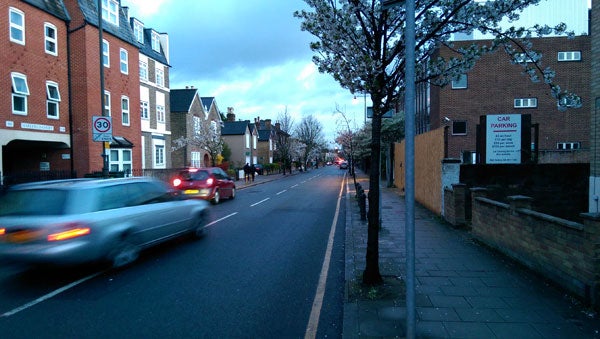
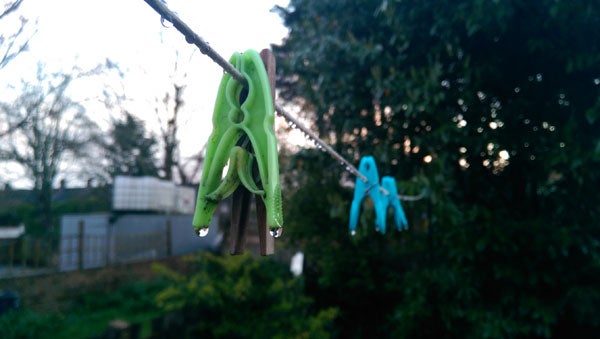

How we test phones
We test every mobile phone we review thoroughly. We use industry standard tests to compare features properly and we use the phone as our main device over the review period. We’ll always tell you what we find and we never, ever, accept money to review a product.


